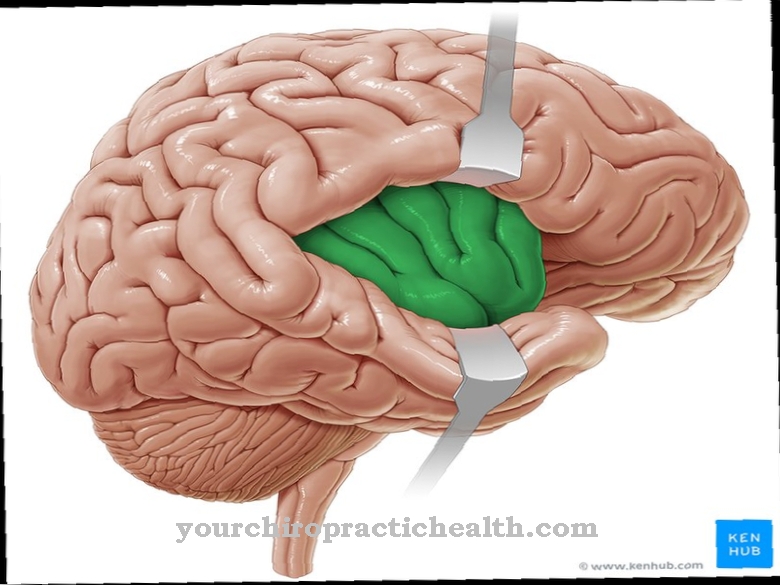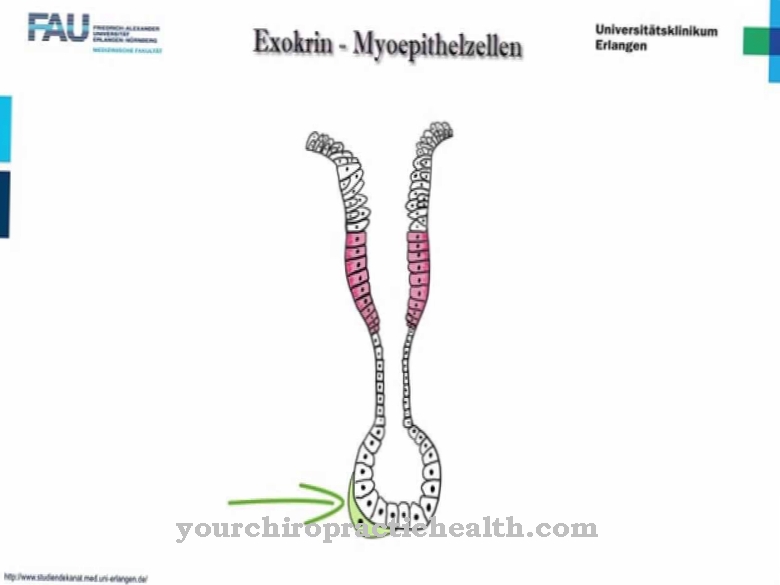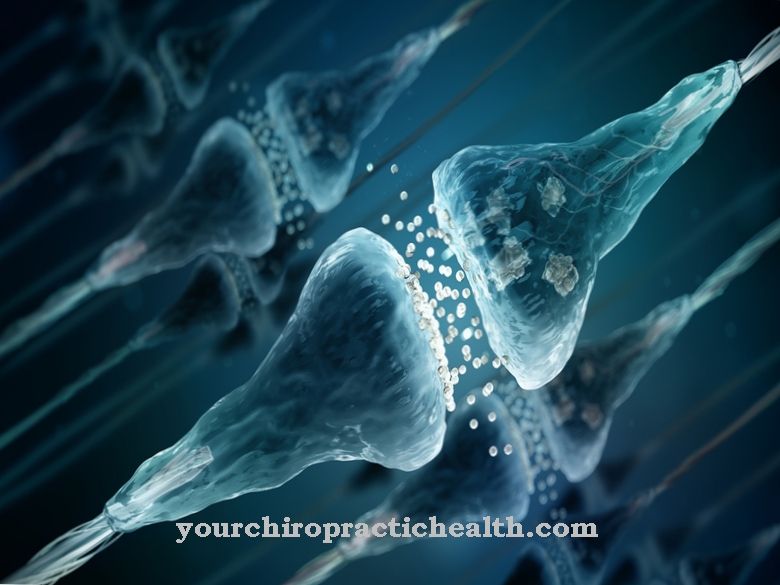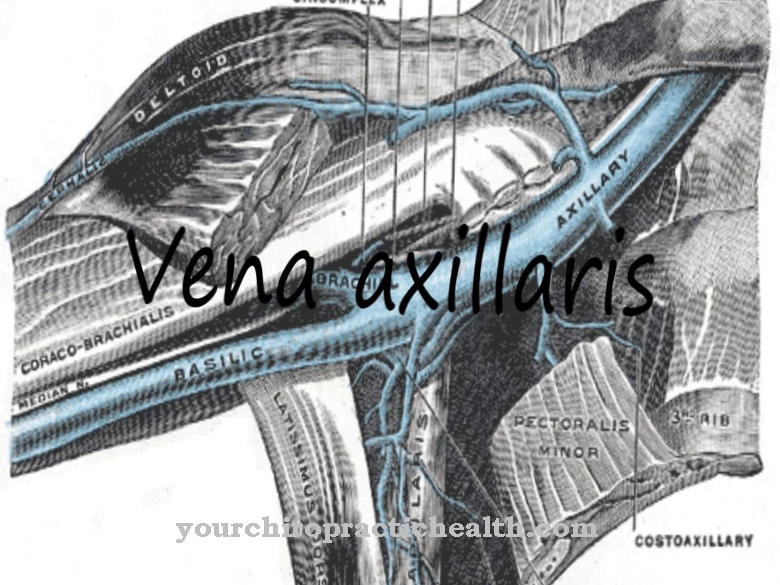The Mechanoreceptors are sensory cells that enable feeling by converting mechanical stimuli such as pressure, stretching, touch and vibration into the body's own stimuli and passing them on to the brain via nerve tracts.
The physician distinguishes mechanoreceptors roughly according to their origin, whereby they differ in their construction and their functionality also depending on the sense organ connected to them. The receptors themselves are rarely affected by diseases, but their nerve pathway connections to the brain can be damaged by inflammation, which results in an incorrect or non-existent perception of pressure, stretching, touch and vibration.
What are mechanoreceptors?
Mechanoreceptors are sensory cells in the ears, skin, and arteries. Together with the thermo, chemo, photo and pain receptors, the mechanoreceptors form the general perceptual system. The structure and function of mechanoreceptors differ depending on the sense organ in which they are located. What they all have in common, however, is the conversion of mechanical force into nerve excitation.
The physician mainly classifies the receptors according to their origin, i.e. according to their evolution. While some of the sensory cells developed from epithelial cells, the other part is evolutionarily derived from so-called ganglion cells. Thus, the cells are mainly divided into epithelial and ganglionic mechanoreceptors.
A ganglion is an accumulation of nerve cells, such as those found in the peripheral nervous system. The epithelium, on the other hand, is a collective term for the human connective and covering tissue. Depending on the localization and the sensory organ linked to them, mechanoreceptors are structured differently and thus differ in their functionality.
Anatomy & structure
Epthelial mechanoreceptors go back to the cells that originally made up the surface of the organism. They contain so-called cilia. These are cell appendages that appear on the plasma membrane as cytoplasmic protrusions.
In these cilia, mechanoreceptors convert an external stimulus, such as pressure or stretching, into an electrical signal that can be processed by the nervous system. Unlike epithal mechanoreceptors, ganglionic mechanoreceptors are located in the tissue. Their structure is ramified and results in hundreds to thousands of individual terminals. The transformation of the external stimulus takes place in these terminals of all ganglionic receptors. All mechanoreceptors are connected to the brain via conduction pathways, which only allows perception to pass into consciousness.
Ultimately, there are roughly five sensory systems in the human body: the auditory system, the sense of touch, the organ of equilibrium, the sense of organ activity and the deep sensitivity to the state of activity of tendons, muscles and joints. They are all equipped with mechanoreceptors. While the auditory system and the sense of balance are equipped with secondary sensory cells, the rest of the systems mentioned have primary sensory cells.
Function & tasks
All mechanoreceptors are designed to respond to mechanical stimuli. These stimuli include pressure, touch, stretching, and vibration. Feeling is, so to speak, the main task of every mechanoreceptor. The epithal mechanoreceptors receive a mechanical stimulus that deforms their cilia. This deformation of the cilia opens or closes certain ion channels, which results in an excitation or inhibition of the associated receptor.
This process takes place, for example, in the hair cells of the human ears and plays a crucial role in the sense of hearing. In fish, the flow receptors also belong to this type of sensory receptor. In contrast, insects are equipped with vibration-sensitive receptors of this type. In the case of ganglionic mechanoreceptors, on the other hand, a mechanical stimulus excites one or more of the individual terminals. In the cell body, the excitations of the individual terminals add up electrically and result in an activation or inhibition of the sense.
Examples of this are the sensory cells of the skin, which are responsible for the sense of touch. On the skin, the doctor speaks of SA-I, SA-II, RA and PC receptors. SA-I receptors produce long-lasting stimuli. In contrast, SA-II receptors are responsible for slow stimuli and are related to the stretching of the skin. The RA form perceives changes in the stimulus intensity, while the PC variant detects changes in the stimulus speed. While primary sensory cells themselves generate an action potential by converting the received stimulus, the secondary sensory cells release neurotransmitters, the amount of which depends on the potential of the receptor.
The physician also roughly differentiates between all of the body's own SA receptors and RA and PC receptors. SA receptors are responsible for the sensation of pressure. The Merkel cells are one example. RA receptors take over the sensation of touch, like the hair follicle sensors do, for example. PC receptors like the Golgi-Mazzoni bodies sense vibration. The heart system, the digestive tract and the muscle spindle are possible examples for the perception of organ and muscle activity. Her areas of responsibility include stretching.
You can find your medication here
➔ Medicines for balance disorders and dizzinessDiseases
Although the mechanoreceptors themselves are usually not responsible for a disturbed or non-existent perception of pressure, vibration, touch or stretching, disturbances of the perceptual ability related to these mechanical stimuli can under certain circumstances occur. Damage to the stimulus-transmitting nerve pathways to the brain is most frequently responsible for such phenomena.
Such damage is often preceded by inflammation, which usually manifests itself in stabbing pain. Tumors in the central nervous system can also be responsible for misperceptions. In rare cases, the receptors themselves are affected by autoimmune diseases or symptoms of intoxication. The symptoms of a disease or dysfunction of the mechanoreceptors depend heavily on which sensory cells are specifically affected. If the receptors in the stomach, in the heart or in another internal organ are affected by a disease, the entire internal system is regulated incorrectly, which can have unpleasant to life-threatening consequences.
Dizziness and nausea, on the other hand, are common symptoms of a disorder of the balance receptors. Ultimately, even asthma, blood pressure and circulatory disorders can be related to a disruption of the respective receptors. The symptomatic picture in this case is extremely diverse.













.jpg)

.jpg)
.jpg)











.jpg)